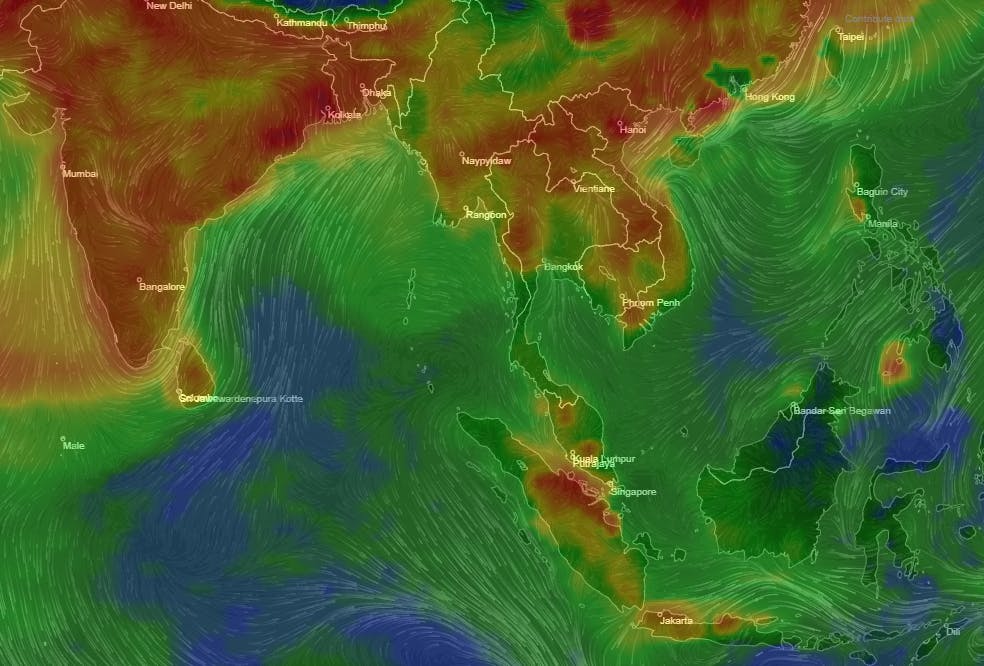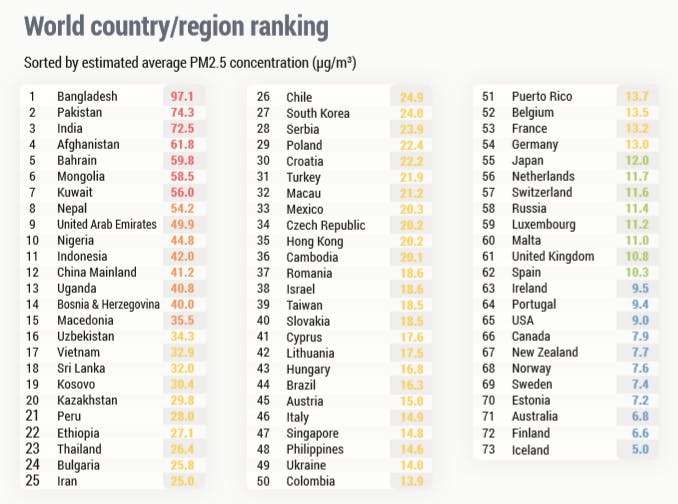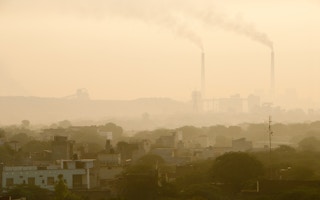Of the 100 most polluted cities in the world in 2018, 99 were in Asia, according to a global report on annual air pollution levels by Beijing-based monitoring firm AirVisual and environmental group Greenpeace published on Thursday.
To continue reading, subscribe to Eco‑Business.
There's something for everyone. We offer a range of subscription plans.
- Access our stories and receive our Insights Weekly newsletter with the free EB Member plan.
- Unlock unlimited access to our content and archive with EB Circle.
- Publish your content with EB Premium.
Half of the world’s 50 most polluted cities are in India, and 22 are in China, with Pakistani and Bangladeshi cities making up the rest. In the top 100 smoggiest cities, 33 are in India, and 57 are in China.
The world’s largest country, however, has seen improvements in air quality in 33 of its dirtiest cities, thanks to emissions regulations and extensive air quality monitoring. Another 24 Chinese cities saw smoggier skies in 2018.
Eleven Indian cities in the top 100 have welcomed cleaner skies this year, while air quality has become smoggier in eight of them, where a cocktail of bad air from traffic, industry, and agricultural and waste burning contributes to the haze.
However, 14 of India’s most polluted cities had no data for 2017.
Gurgaon, also known as Gurugram, a city southwest of India’s capital, New Delhi, has the world’s most polluted air, with the annual average level of PM2.5—small particles considered the most dangerous to human health—more than 13 times higher than the World Health Organisation’s (WHO) air quality guidelines of 10μg/m3.
How polluted is Asia?
Bangladesh has the world’s worst air weighted by population, followed by Pakistan and then India.
Korea has the worst air among wealthy Asian countries. The country has 44 cities in the top 100 most polluted cities in OECD countries in 2018.
99 per cent of cities in South Asia exceeded WHO’s healthy air guidelines, 95 per cent of cities in Southeast Asia and 89 per cent of cities in East Asia.
The West China city of Hotan, Xinjiang province, suffered the heaviest air pollution of 2018, when average PM2.5 levels exceeded 300—defined as “hazardous” to human health—in the month of April, largely as a result of sand storms.
Ranking 686th with ‘moderate’ air that is double WHO’s safe limit, Hong Kong’s air improved in 2018, with pollutant levels dropping from 21.8 to 20.2. Singapore’s cleaner air got dirtier, with pollution increasing from 13.3 to 14.8.
Jakarta is Southeast Asia’s most polluted city, Manila is the sub-region’s cleanest.
In the US and Canada, air quality is relatively good, but historic wildfires meant that 5 out of 10 most polluted cities in the world during August 2018 were in North America.
The city of Lukavac in Bosnia Herzegovina, known for its chemicals factories, is the only non-Asian city in the top 100 most polluted cities.
Average concentrations of pollution in Chinese cities fell by 12 per cent from 2017 to 2018.
Yann Boquillod, director of air quality monitoring at AirVisual, told Eco-Business that the report’s standout air quality performer was China’s capital.
“Beijing has seen a dramatic drop in air pollution in recent years, particularly in the winter months, largely as a result of factory closures,” he said.
Beijing has seen PM2.5 levels drop from ‘unhealthy’ to the ‘unhealthy for sensitive groups’ between 2017 and 2018.
Four years ago, an air quality reading of around 200 µg/m³ was accepted as “normal” in Beijing, noted Boquillod, who is based in Beijing. In 2018, pollution dropped to roughly a fifth of that level.
However, Beijing air is still almost six times over WHO’s guidelines, and in February this year saw PM2.5 levels climb to a five-year high, up 28 per cent year on year.
Hold your breath, you’re in Jakarta
In Southeast Asia, Jakarta registered the most polluted air in the sub-region last year. The Indonesian capital saw air quality worsen by 53 per cent in a year, one of the biggest drops in a report that covered 3,000 cities all over the world.
Jakarta’s 2018 pollution levels, four and half times over WHO’s target, were just 12 per cent lower than in Beijing’s. The city, which has more coal-fired power stations near it than any capital city in the world and notoriously bad road congestion, hosted the Asian Games in 2018, and athletes collapsed due to the smog.
Hanoi, in the industrial north of Vietnam, is Southeast Asia’s second most polluted city, while three out of the five most polluted places in Southeast Asia are in Thailand.

A map of India and Southeast Asia’s air quality from AirVisual Earth on 7 March 2018. Warmer colours indicate heavier air pollution. In Sumatra, air pollution is a result of forest fires.
Malaysia was not included in this year’s report. According to AirVisual, there was not enough data for Malaysia to be represented, as the country only started measuring PM2.5 in the third quarter of 2018. Malaysia will appear in the 2019 report, AirVisual told Eco-Business.
Yeb Sano, executive director, Greenpeace Southeast Asia, said that burning fossil fuels—coal, oil and gas—was the most common culprit of global air pollution, which results in an estimated seven million premature deaths and costs the world’s economy US$225 billion a year.

A ranking of countries by air pollution. Source: AirVisual
Sano pointed out that climate change was making air pollution worse, by changing atmospheric conditions and exacerbating forest fires.
“Local and national governments can help tackle the effects of air pollution by providing adequate monitoring and reporting infrastructure,” Sano noted.
“What we need to see is our leaders thinking seriously about our health and the climate by looking at a fair transition out of fossil fuels while telling us clearly the level of our air quality, so that steps can be taken to tackle this health and climate crisis,” he said.

















